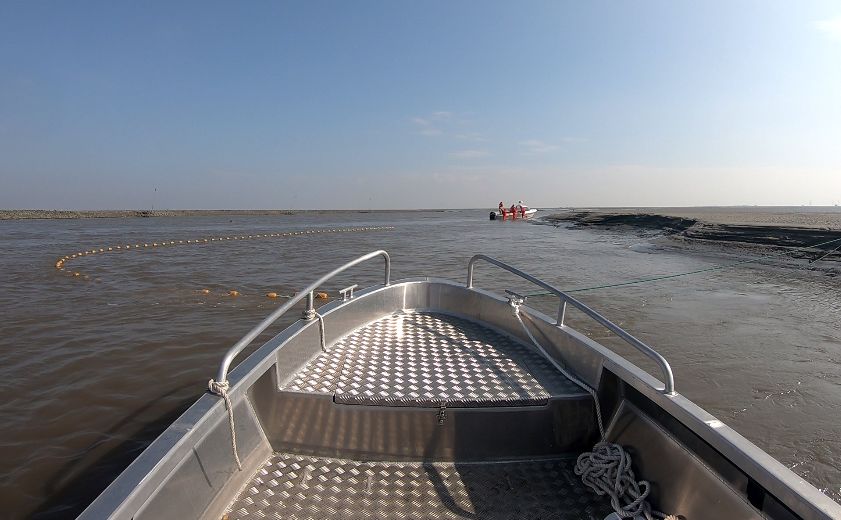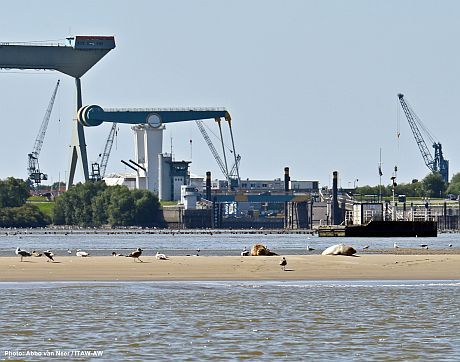
| Project leader: | Prof. Prof. h. c. Dr. Ursula Siebert |
|---|---|
| Scientific staff: | Dominik Nachtsheim |
| Project term: | August 2019 - December 2022 |
| Sponsorship: | German Federal Institute of Hydrology (BfG); project leader in BfG: Dr. Thomas Taupp, Department U4 Animal Ecology |

Project description
The estuary of the Elbe is exposed to significant anthropogenic activities such as commercial shipping, fishing, deepening and recreational activities. The estuary is the entrance to the Port of Hamburg and the Kiel Canal - the Elbe is thus one of the busiest waterways in Europe.
Despite the strong anthropogenic use, marine top predators from the North Sea regularly enter the Elbe. Rich fishing grounds attract not only porpoises to the port of Hamburg, but also seals use the Elbe and can be seen at low tide on the then exposed tidal flats. However, it is unclear to what extent seals use the tidal Elbe, in which areas they forage, if they exhibit site fidelity and whether there is a regular exchange with animals from the North Sea.
For this reason, up to 10 harbour seals will be briefly caught at various haul-outs in the tidal Elbe, will be checked for their health and subsequently equipped with special bio-telemetry tags ("SMRU GPS Phone Tags"). Since seals spend most of their lives in the water, where it is difficult to observe them, telemetry (recording of behavioral and environmental data using electronic devices) is a very useful method for assessing behavior, habitat use and interactions between the animals and their environment. The tags record the movements and the diving behavior of the animals in detail and then send the data via the local mobile phone network, which enables a live tracking of the seals. The data obtained will give an insight into the space use, the site fidelity and the home ranges, and will also allow an estimate of possible conflicts, e.g. with the shipping traffic in the Elbe.
In addition, in the course of the catches, various samples are to be taken for further analyses (e.g., heavy metal pollution, exposure to organochemical substances and diet analyses).
Contact person
Stiftung Tierärztliche Hochschule Hannover
Institute for Terrestrial and Aquatic Wildlife Research
Werftstr. 6
25761 Büsum
Dr. Dominik Nachtsheim
Phone: +49 (0)511-8568159
e-mail schreiben


